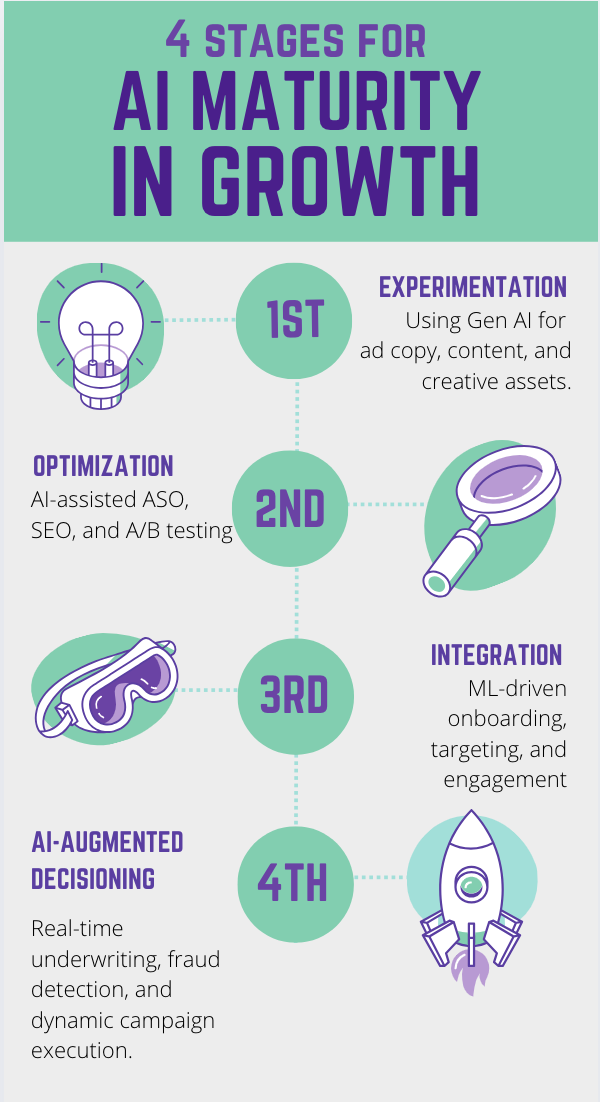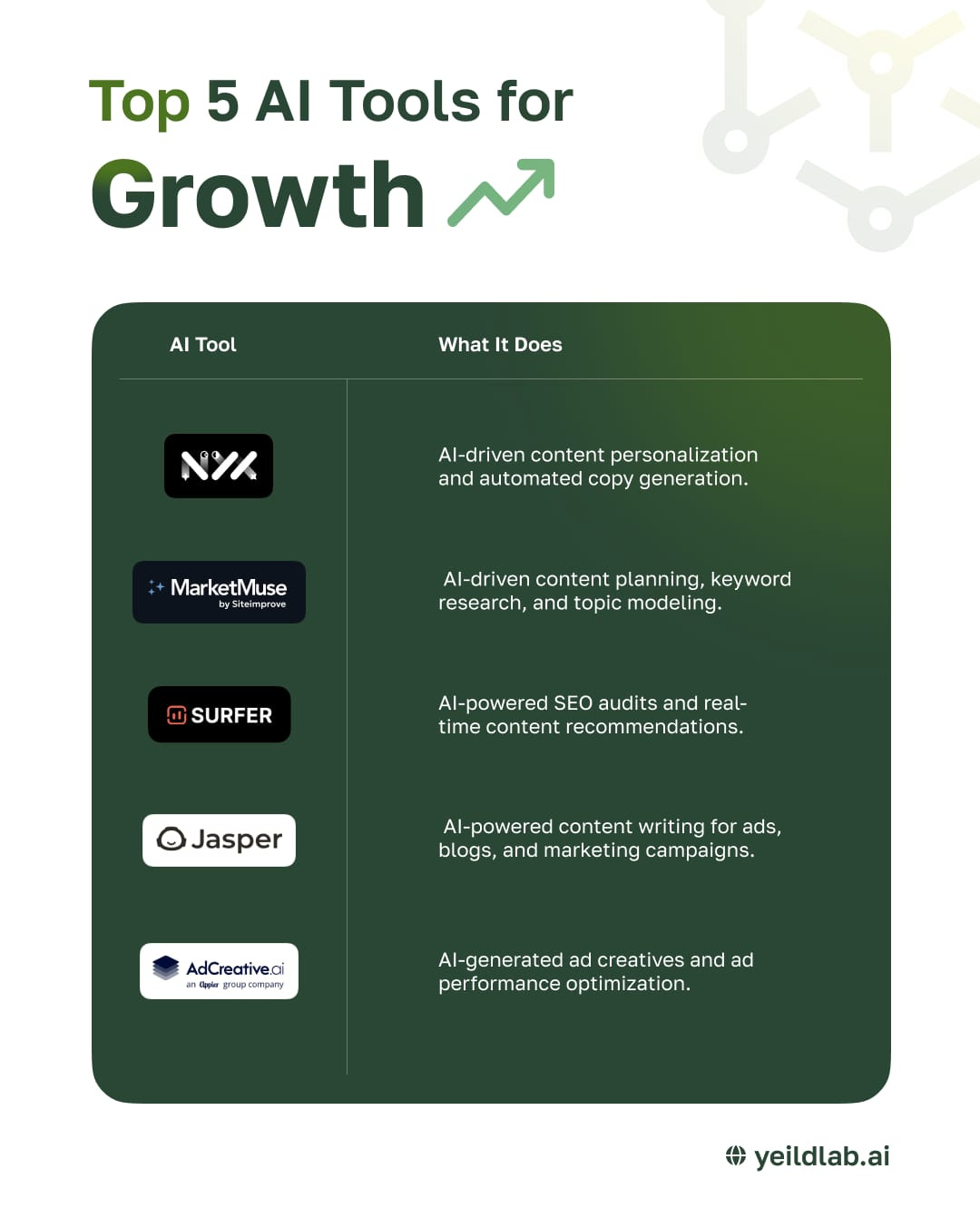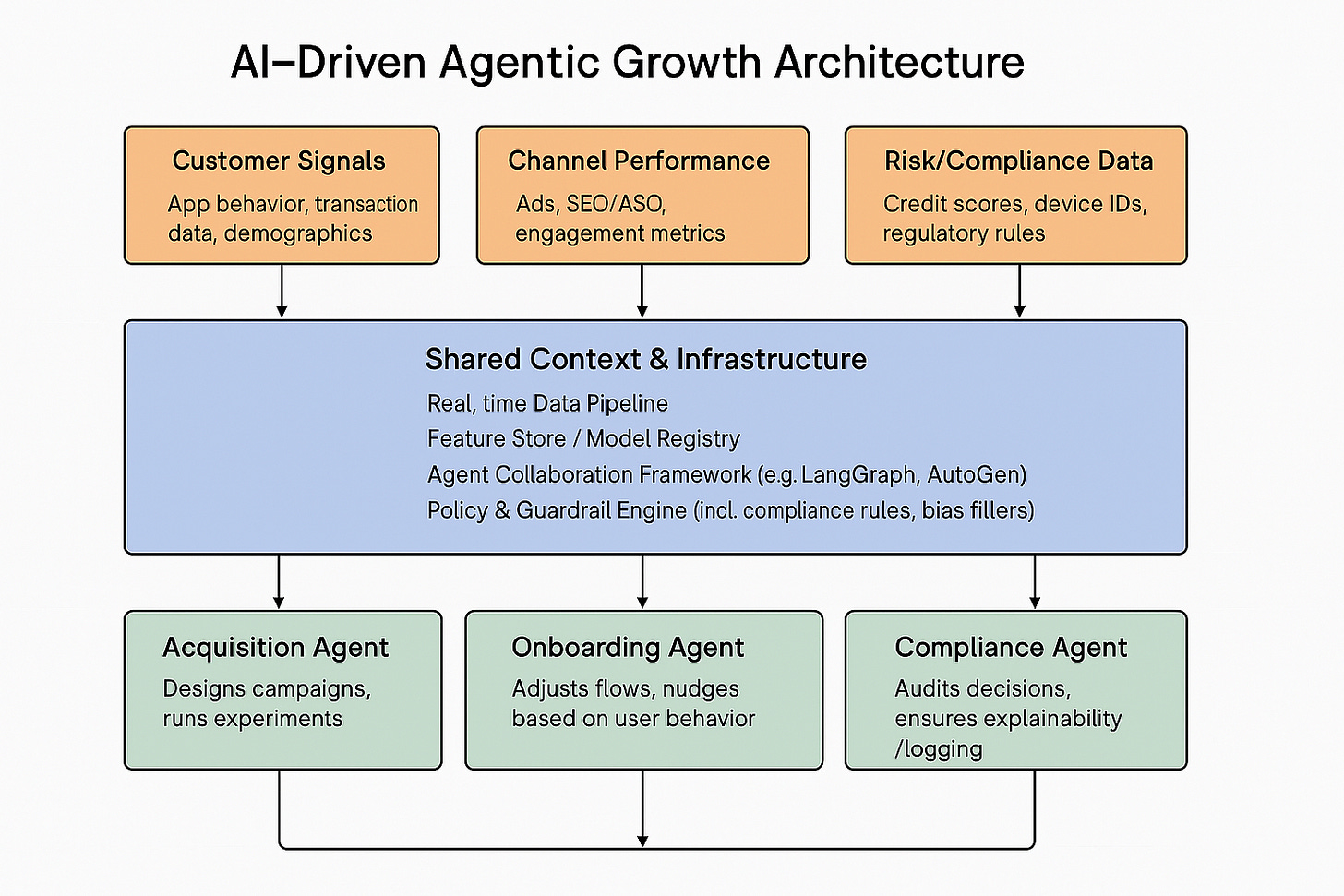AI-Powered Growth: How Credit Card Portfolios Are Scaling Smarter, Faster, and Leaner
Part 2 of the YieldLab Series: AI in Portfolio Management — From Theory to Action
Editor's Note
This article is the third in our YieldLab series on how artificial intelligence (AI) is transforming every layer of credit card portfolio management. Having covered the strategic imperative ("Why Now") and foundational readiness ("Data Readiness"), we now examine how AI is driving growth across the customer journey.
From brand discovery to onboarding and risk evaluation, fintechs and digital-first card issuers are embedding AI across their growth stack. We focus on six areas: Branding and Content, SEO and ASO, Digital Advertising, Onboarding, Identity and Fraud Verification, and AI-Driven Credit Decisions.
1. Rethinking Growth: Intelligence Over Scale
Credit card growth strategies have historically been a game of big budgets, mass campaigns, and large acquisition pipelines. But in today’s hyper-competitive market, scale alone isn’t enough—growth must be intelligent.
AI is at the core of this shift. Machine learning (ML), large language models (LLMs), and generative AI are now being embedded across marketing, customer acquisition, underwriting, and fraud prevention. This technology isn’t just about automation—it’s about making smarter, faster decisions that lower acquisition costs, improve engagement, and enhance risk assessment.
But not every fintech is equally prepared. AI maturity in credit card growth typically follows these stages:
Understanding where your organization sits on this curve is critical to deploying AI effectively.
2. Branding and Content: The AI-Powered Creative Engine
Marketing teams are already outsourcing parts of their creative process to AI—but the key is to use these tools wisely.
Generative AI platforms like GPT-4 (text) and Adobe Firefly/DALL·E (visuals) enable rapid content production, yet financial brands must balance speed with compliance. AI-generated copy must be reviewed to prevent hallucinations or regulatory missteps. Human-in-the-loop models, where AI drafts content and experts refine it, are proving to be the best approach.
To test AI’s potential, marketing teams are experimenting with platforms such as Jasper.ai and NYX.today, which specialize in AI-generated copywriting and brand personalization at scale.
AI Tip: Use sentiment analysis to monitor how customers react to AI-generated campaigns and adjust messaging accordingly.
3. SEO: Smarter Content, Higher Visibility
SEO is no longer about stuffing keywords—it’s about understanding search intent. AI-powered platforms like MarketMuse and SurferSEO analyze thousands of articles and search queries to optimize content structure and improve rankings.
For fintechs, this means AI can:
Identify trending topics before they become mainstream.
Suggest optimal content structures for blog posts and landing pages.
Automate content research, reducing the workload of SEO teams.
Companies are also integrating chatbots on landing pages to improve session time and engagement, factors that enhance search rankings.
4. ASO: The AI Playbook for App Store Growth
With mobile banking and fintech apps dominating customer engagement, AI-driven App Store Optimization (ASO) has become critical. AI-powered platforms like SensorTower and Data.ai analyze search trends, competitor performance, and keyword effectiveness.
AI’s role in ASO includes:
Automated keyword optimization for app titles and descriptions.
A/B testing app store creatives to maximize installs.
Predictive analytics for ad performance within app stores.
This level of automation allows fintechs to stay ahead of algorithm changes and maximize visibility.
5. Digital Advertising: Smarter Bidding and Creative Testing
Digital advertising has been one of AI’s biggest success stories.
Google Smart Bidding and Meta’s Advantage+ now automate real-time bid adjustments and audience targeting. Marketers are also turning to AdCreative.ai, a platform that generates AI-powered ad visuals, headlines, and descriptions.
AI enhances performance by:
Auto-generating ad creatives for rapid testing.
Adjusting bidding strategies dynamically to optimize budget.
Predicting audience engagement for different ad placements.
One fintech reduced customer acquisition costs (CAC) by 25% by integrating AI into its digital advertising strategy.
6. AI in Onboarding: Faster, More Personalized Journeys
Fintechs are using AI to streamline the onboarding experience and minimize friction.
ML-powered tools now:
Detect when users hesitate and offer real-time assistance.
Use behavioral analysis to personalize onboarding steps.
Shorten KYC processing by integrating AI-driven verification.
Fraud prevention is also a key component. Platforms like Onfido and Veriff enable fintechs to verify identities using AI-driven document authentication and biometrics.
7. Credit Decisioning: Smarter, Fairer Approvals
AI-powered credit underwriting models are moving beyond traditional bureau scores. Many fintechs now rely on:
Cash flow analysis (using real-time transaction data to assess affordability).
Behavioral analytics (tracking app engagement and repayment patterns).
AI-powered fraud detection (analyzing device fingerprinting and identity signals).
However, explainability is crucial. Regulators require AI-driven credit decisions to be auditable, making models like XGBoost and SHAP-explained frameworks a preferred choice.
8. AI’s Biggest Pitfalls: What to Watch For
Despite its promise, AI in fintech comes with risks:
Bias in models — AI can unintentionally exclude certain demographics.
Regulatory complexity — GDPR, AI Acts, and financial compliance frameworks demand transparency.
Data quality issues — AI models are only as good as the data they are trained on.
To avoid these pitfalls, companies need AI governance, regular audits, and continuous model refinement.
9. AI Tools for Growth Beyond OpenAI and Midjourney
For fintechs looking to experiment with AI, here’s a curated list of top tools across marketing, and risk management:
These tools offer fintechs a practical starting point for AI-driven growth, covering content, SEO, ASO, digital advertising.
These tools offer fintechs a starting point for AI-driven growth.
10. The Future of AI in Growth: What’s Next?
AI is no longer a “nice-to-have.” It’s the growth engine of modern fintech.
But we’re entering a new frontier—Agentic AI Architecture—where AI doesn’t just support tasks; it collaborates, orchestrates, and optimizes entire workflows across departments.
In this emerging setup, individual AI agents specialize in functions like:
Acquisition Agent: Designs and runs real-time marketing experiments.
Onboarding Agent: Optimizes the user funnel based on behavioral signals.
Risk Agent: Continuously simulates policy outcomes and alerts on anomalies.
Loyalty Agent: Monitors usage trends and triggers personalized rewards or upgrades.
Compliance Agent: Monitors model decisions and audits explainability logs.
These agents coordinate via a shared environment, powered by real-time data streams, policy guardrails, and human feedback loops. Together, they form an agentic growth OS—an intelligent layer between your strategy and execution.
However, this requires:
Organizational readiness to embrace AI collaboration.
Data architecture that supports context sharing across agents.
Ethical design and governance frameworks that ensure transparency.
Fintechs that invest early in agentic systems will gain compounding advantages—not just in performance, but in adaptability and resilience.
Below is a conceptual diagram of a future AI-Driven Agentic Growth Architecture.
Coming up next in this Part of the series:
Lifecycle Management with AI—How issuers are using AI to personalize engagement at every customer touchpoint.
AI for Credit Line Management—The evolution of dynamic credit decisions.
Assess your AI data readiness with Yield Lab. Connect with us for a hands-on strategy session.




